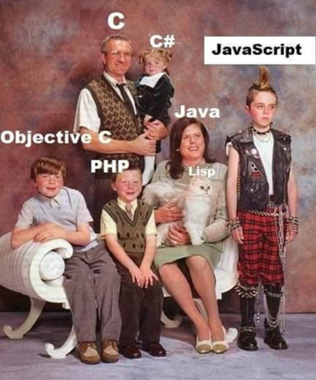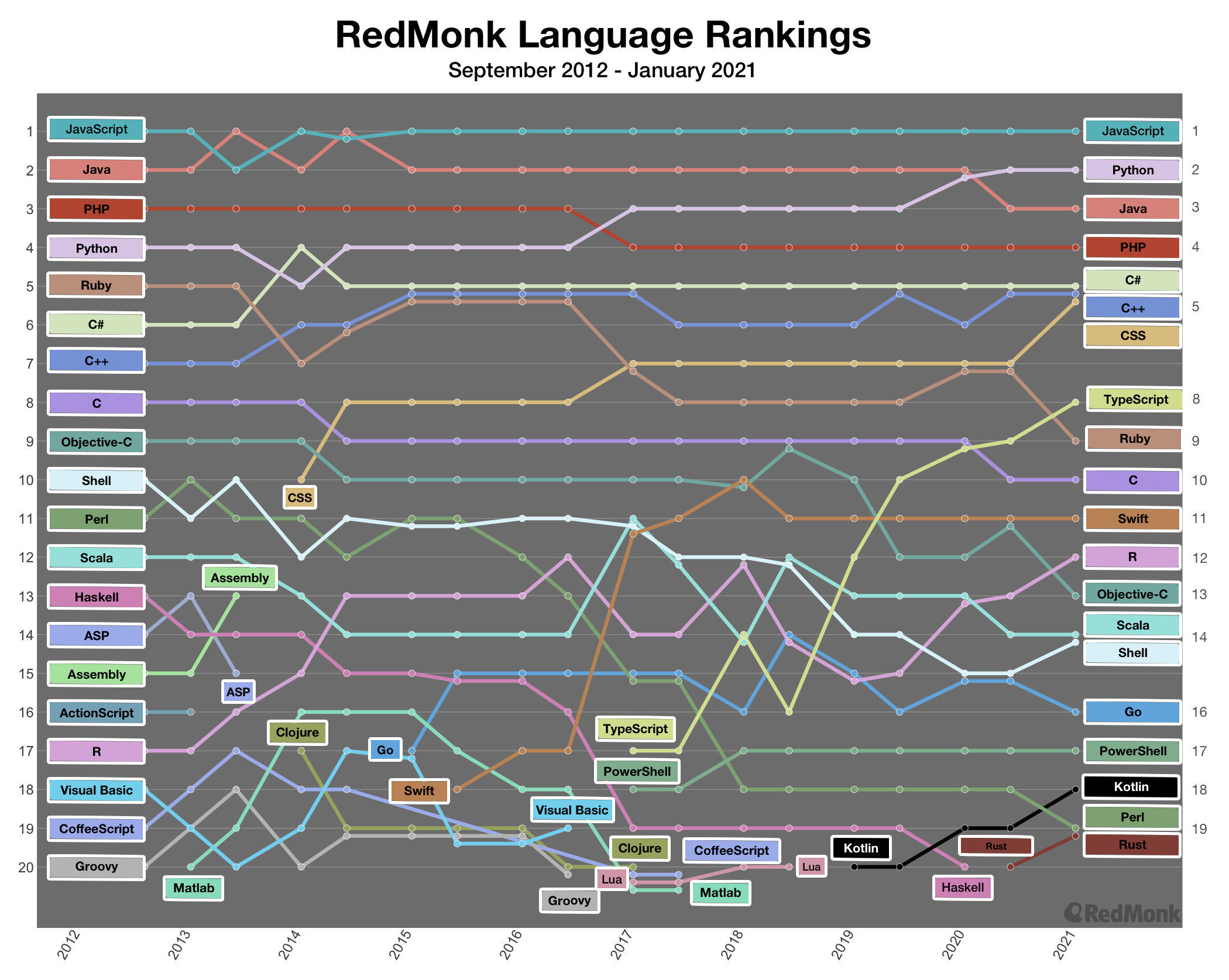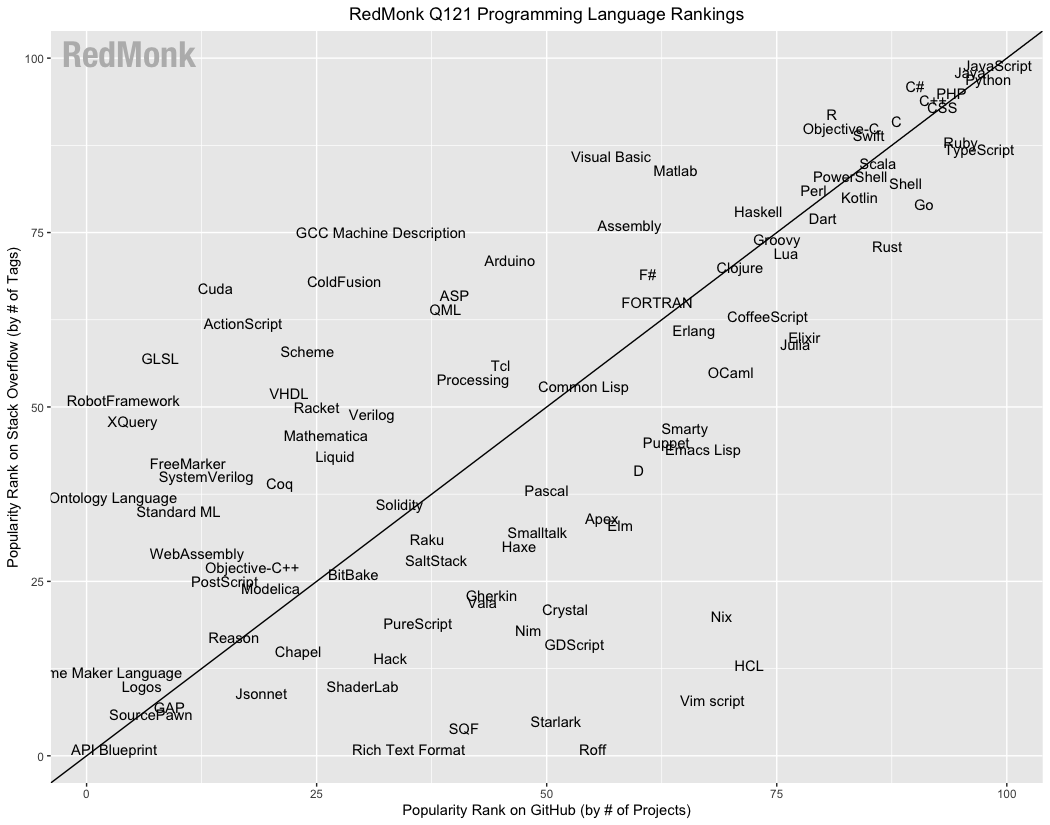Evolution of Programming Languages

First Generation
- Machine code = binary code
- What the processor understands
- People don't write machine code, but everything that runs on a computer is first converted to machine code.
Second Generation
- Assembly language
-
Primitive instructions that reflect what the processor can do
- See: x86 instruction listings
- ADD = add two numbers
- MOV = move data from one place to another
- JMP = jump to another line of code
- ...
-
Still used in very simple computers or at low levels, e.g.:
- Embedded systems (e.g., IoT devices, cars, microwaves, ...)
- Microcontrollers
- Some operating systems
- Is compiled to machine code
Third Generation
- Compiled or interpreted code
- "Human readable" code, like Python
- Is compiled or interpreted to machine code
4th and 5th Generations

There are technically 4th and 5th generation languages, but the distinction is less clear. They're typically defined as less instruction-oriented and more problem-oriented.
Don't worry about them. They're for analysts and engineers who don't know how to code.
Compiled vs Interpreted Code
All code must be converted to machine code before it can be run. The difference is in when and how this conversion happens.
Compiled Code
A compiler is a program that translates code written in a high-level language to a lower level language ahead of time. Compiled languages cannot be run until the compiler has translated the whole program into machine code.
- Takes the actual text of the program and converts it into instructions that the processor can execute.
- Output is either a file that is directly executable or a library that can be used by other programs.
Advantages
- Faster and more efficient execution (since it knows what to expect ahead of time)
- Can catch errors before the program is run
- Can be optimized for specific hardware
- Can be distributed without the source code
Disadvantages
- More complex development process
Examples
- C, C++, Rust, Go, Swift, Java, C#...
- Compile a C program with gcc
- Run a Python program line by line
Interpreted Code
An interpreter is a program that reads code and executes it line by line at runtime.
- Picks off a statement, translates it to machine code, and runs it.
- Then does the next statement, and so on.
Advantages
- Fast to develop b/c you don't have an intermediate compilation step.
- Less complexity in the development process.
- Often easier to debug.
Disadvantages
- Slow execution
- Less efficient use of system resources
- Can't catch errors until the program is run; e.g. Python code broken on line 12 won't be caught until... we hit line 12. This leads to buggy releases.
Examples
Python, Ruby, JavaScript, PHP, Perl, ...
Language History and Trends
Timeline

https://javaconceptoftheday.com/history-of-programming-languages/
Popularity Metrics

https://redmonk.com/kfitzpatrick/2021/03/02/redmonk-top-20-languages-over-time-january-2021/

https://redmonk.com/sogrady/2021/03/01/language-rankings-1-21/
https://www.devjobsscanner.com/blog/top-8-most-demanded-programming-languages/
https://www.devjobsscanner.com/blog/top-8-most-demanded-programming-languages/
Critical Thinking Exercise:
What do the above data tell us?.
- Be mindful of timeliness of source data.
- What's actually on the axes of these graphs?
- Why might some languages show up more on a particular graph?
When considering a language to learn:
- Be mindful of demand for a particular language in your area (lookin' at you C#, JavaScript/TypeScript, HTML/CSS).
- Check job listings. Make informal inquiries. Job shadow.
Application Domains
In no particular order:
- Web Development: HTML, CSS, JavaScript, PHP, Python, Ruby, Java, C#, SQL
- Mobile Development: Java, Swift, Kotlin, C#, JavaScript
- Desktop Development: C++, C#, Java, Python, Swift, Rust
- Game Development: C++, C#, Java, JavaScript, Rust
- Data Science: Python, R, SQL
- Scripting: Python, Bash, PowerShell